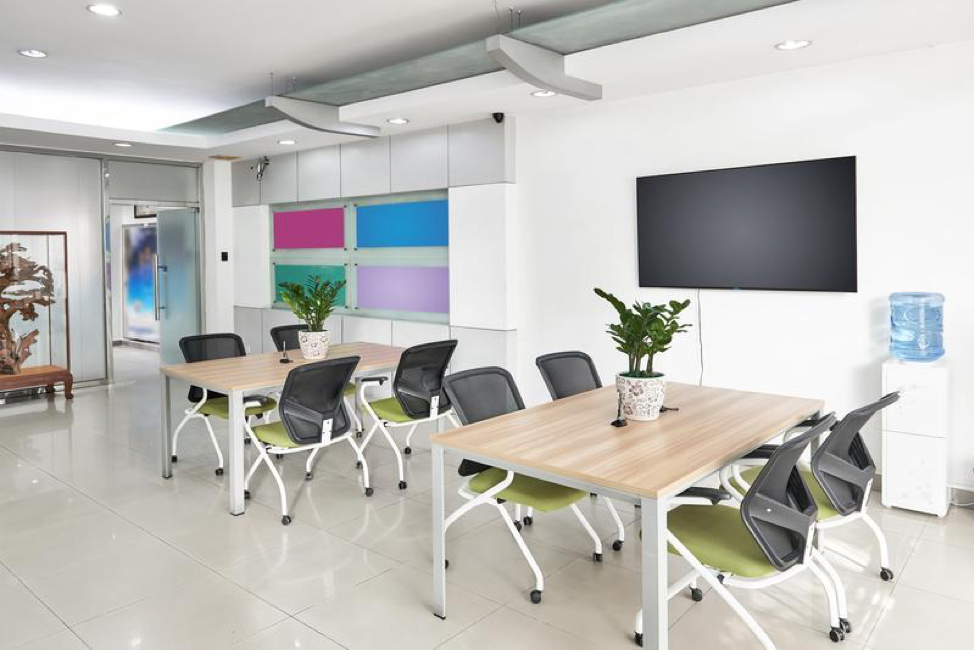The space that you work in is just as important as the work processes you are implementing. Whether you are looking for a new office space or you have been in your office for a while, you need to pay attention to your space. When you notice a dip in the productivity of you and your employees, it might not be a problem with the workers. It could be due to a poorly designed or maintained environment. The condition, setup, design, and decor of the workplace play a significant role in employee mood and satisfaction, which also affect employee productivity. Consider these seven decorating ideas to increase employee productivity at your organization.
Add More Natural or Full-spectrum Lighting
The types and amounts of lighting play a prominent role in how efficient, and motivated people are at work. Fluorescent light is harsh, and it may cause eye strain and headaches. Insufficient lighting may cause employees to feel sleepy or move more slowly. Whenever possible, use more natural lighting in your building. In places where natural lighting is not feasible, switch to full-spectrum light bulbs. Full-spectrum bulbs deliver all of the visible light and are the closest type of artificial lighting to natural sunlight.
Update the Office Desks
Office desks also play an important role in employee productivity. Desks that are too small may cause employees to lack enough space for organization. Also, desks that are too large may be difficult to manage. The best office desks should be comfortable and ergonomic. The height should be able to accommodate employees of different sizes who are seated in their office chairs. Consider desktops that have a white or light-colored surface such as tan or light yellow. These colors make items on the desk easier to see.
Switch to Ergonomic Chairs
Employees who spend the majority of their workdays seated at a desk may experience sciatica, back aches, shoulder pain, neck strain and headaches if their office chairs cannot accommodate proper posture. Office chairs should have an ergonomic design that supports the natural curve of the spine. The seat should be adjustable in height so that people who are shorter than average can adjust it, so their feet touch the floor without putting too much pressure on the backs of their knees. For people who are taller than average, the seat of the chair should allow for adjustment, so they do not have to slouch, and the increase in the seat height should still allow them to fit their legs under the desktop.
Change the Type of Flooring
Flooring covers a lot of the surface area in your building. Floors that are squeaky or slippery may make employees extra cautious, slowing down, so they do not trip or slip and fall. Floors that are uneven could also be a hazard and drain on productivity. If your floors are overdue for repair or replacement, now is the time to get them fixed. Consider floors made of concrete, natural or synthetic stone. These materials offer enough traction for safety and do not make an excessive amount of noise. They are also easy to clean. When concrete or stone floors are not an option, consider bamboo flooring. Bamboo looks like hardwood, but it is more sustainable. It is easy to maintain, has a warm color and coordinates with other natural materials and neutral colors.
Consider Natural Decorations
Natural decorations such as jute window shades lend a sense of calm. Plants are another ideal solution for decorating the workplace. Plants such as cacti are available in bright colors. Ferns are verdant. Spider plants are easy to grow and thrive in most office buildings.
Choose Calming Colors
The color of the walls could impact employee productivity. Blue or green walls might make employees too relaxed, while red or yellow might distract them. Stick with a neutral paired with a bright color in specific locations. For example, light gray paired with orange or three beige walls and a fourth wall that is purple brings the right amount of visual interest without being too stimulating.
Allow Space for Employee Expression
Allow your employees to have a means of expressing themselves. Cubicle walls lend themselves to hanging up a child’s artwork or an award. On the main walls of the workspace, consider hanging up cork bulletin boards. You could even use chalkboard paint for one of the walls. Provide colored chalk for employees to draw or write out some of their favorite quotes. Meeting rooms could make use of a wall that is prepped for use with dry erase markers. In the break room areas, bulletin boards could be used for hanging informational flyers and displaying items of interest.
If cost is a factor, implement one of these ideas at a time. Some of these redecorating ideas do not cost a lot of money, such as setting up bulletin boards or changing the type of light bulbs in your lighting fixtures. Each time you implement one of these ideas, reevaluate the productivity of your employees. Once you reach your productivity goals, be sure to let your employees know how much they have improved and how much their work is appreciated.
